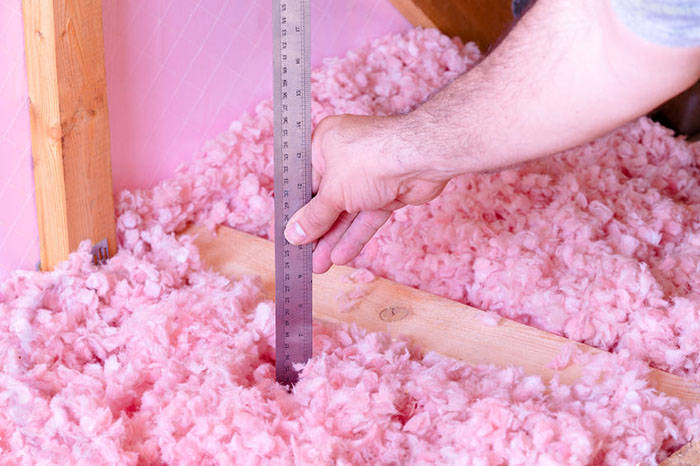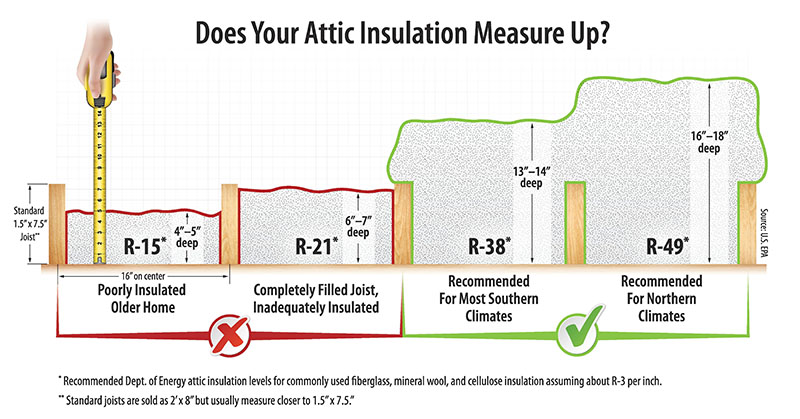Rule your attic, save on energy costs

Cold winds are here as winter settles in, but is your attic insulation up to the challenge?
Now is a good time to double-check your rafters and attic space to ensure they are properly insulated against energy leakage.
>> Download this PDF how-to guide <<
In 9 out of 10 American homes, under-insulated attics are wasting money by increasing utility bills. By adding insulation or sealing air leaks, you can save up to 10 percent on your home’s annual energy bills – and keep your family more comfortable.
Here’s how to “rule your attic” this year:
1. Measure. Go into your attic space and measure the insulation level.

2. Get solutions. If you find low insulation levels, get advice on how to seal and insulate your attic for comfort and savings. Here’s a video showing you some tips.
3. Fix and save. Take steps to fix your attic insulation level by hiring a contractor or doing it yourself. If you make the fixes yourself, make sure you have the right safety equipment on hand. Some of the equipment you will need: gloves, dust mask, tape measure, eye protection, caulk and caulk gun and spray foam.
In addition to energy savings, other benefits of sealing and insulating your home include: reduced noise from outside; less pollen, dust and pests entering the home; better humidity control.
Finding air leaks
More than any other time of year, you notice air leaks in your home in winter. You may feel these drafts around windows and doors, leading you to think these leaks are a major source of wasted energy. But in most homes, the most significant air leaks are hidden in the attic or basement.
In cold weather, warm air rises in your house. If it goes up into your attic, it is wasted energy, and will suck cold air in all around your home’s windows and doors.
Even if you have adequate attic insulation, sealing attic air leaks will enhance its performance and make your home more comfortable.
Common sources of air leaks:
- Behind kneewalls
- Attic entry hatch
- Wiring holes
- Plumbing vents
- Open soffit (the boxes that house recessed lighting)
- Recessed lights
- Furnace flue or duct chaseways (the hollow box or wall feature that hides ducts)
- Basement rim joists (where the foundation meets the wood framing)
- Windows and doors

Work smart and safe
It is recommended to have a licensed professional seal most air leaks. Making a home air-tight sounds good on the surface, but could result in backdrafting combustion appliances, which releases carbon monoxide into the home.
A professional can not only test your home for combustion safety, they can test the initial air leakage of the home by performing a blower door test. This test determines where the best starting point will be to air seal the home.
An energy audit can accomplish these test. Find a local energy rater at RESNET HERS index Rater Locator.

Laura King-Homan is the supervisor, Brand and Communication Operations, at Omaha Public Power District. She has nearly 20 years of print journalism and design experience, including the Omaha World-Herald.
View all posts by Laura King-Homan >





